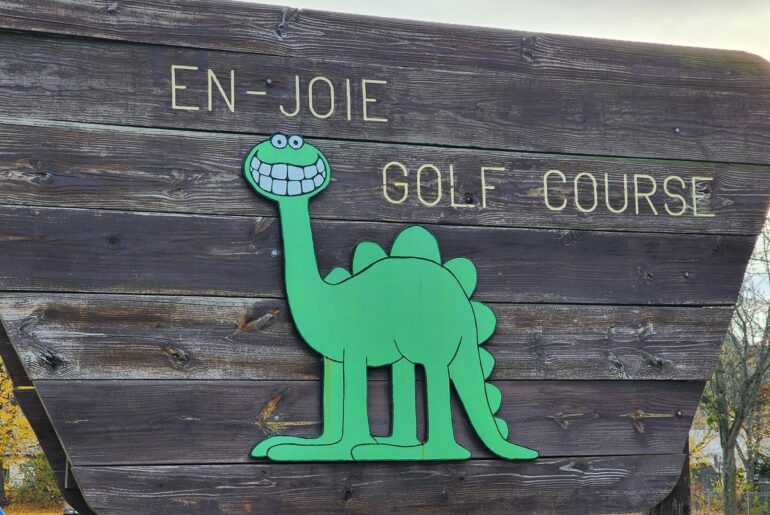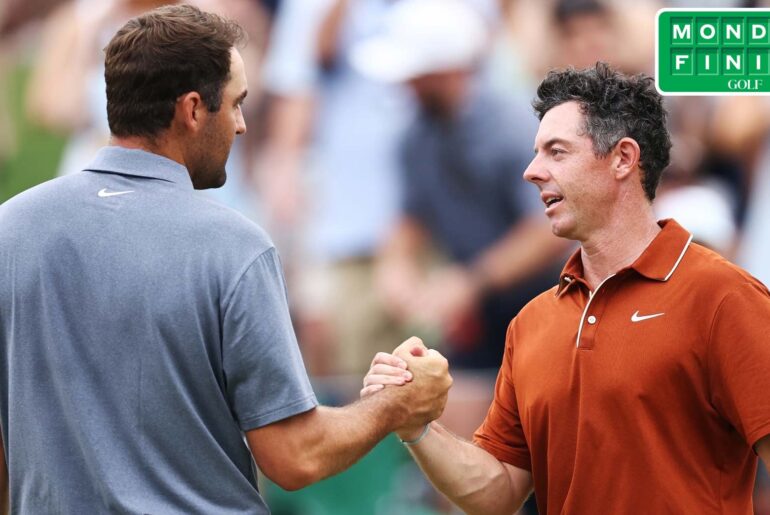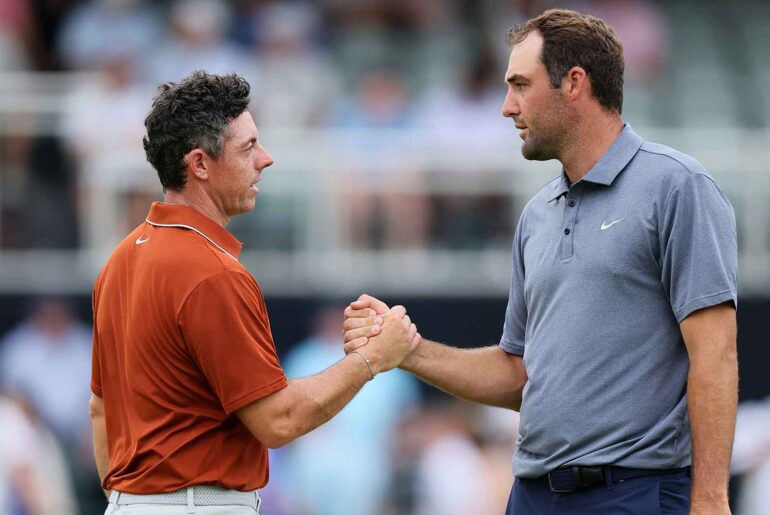Back in August of 2019, a series of video clips of Bryson DeChambeau went viral on Twitter, as it was then called.
The first showed the then PGA Tour pro spending two minutes and 20 seconds stepping off and sizing up a 70-yard approach shot and he hadn’t even addressed the ball, nevermind pulled the trigger when the video ended – it would’ve taken over three minutes to show the entire process. The second, showed him spending more than two minutes sizing up – and re-sizing up – an eight-foot putt, as Tommy Fleetwood and Justin Thomas in the background both visibly showed their frustrations at the tedious process.
Luke Donald, Rich Beem, Ian Poulter, Joel Dahmen and Eddie Pepperell were among those to criticise either DeChambeau, the PGA Tour’s failure to tackle the pace of play issue, or both, and Pepperell even went as far as to call DeChambeau a “single minded twit” on social media.
Brooks Koepka never publicly criticised DeChambeau on that occasion – he had name-checked him in the past – but he must’ve said something to somebody and it got back to Bryson who approached Ricky Elliott on the putting green the following day and told him that if his boss wanted to say something to him, to say it to his face – or words to that effect, at least. And this led to Koepka confronting DeChambeau when he arrived.
Exactly what was said, we might never know, but Koepka had won four majors over the previous 26 months, was the number one player in the world, and was considered the game’s alpha male – its jock. Bryson, yet to win a major and with a penchant for scientific mumbo jumbo, was its nerd.
And social media was ruthless. Jokes about Brooks giving Bryson a wedgie, stuffing him in a locker, flushing his head in the toilet, taking his lunch money, just about stereotypical high school bully tactic flooded the internet. I’ve always contended that the intense bulking phase that followed shortly afterwards was as much about Bryson trying to become more ‘jock’ than ‘nerd’, but regardless, he was the butt of the joke then.
Fast-forward a few years, and now Bryson is one of the most popular golfers on the planet.
Is it because he went to LIV? No, the viewing numbers suggest that his tournament golf – outside the majors – is attracting a much smaller audience than it did when he was on the PGA Tour?
Is it because he’s winning majors? No, he won the 2020 U.S. Open and gained no real popularity as a result.
Is it because his scientific approach is now considered cool? I’m not exactly on the cutting edge of what’s cool, and what’s not, but I’m willing to stick my neck on the line and say ‘no’ to this one too.
It’s because of YouTube. When co-founders Chad Hurley, Jawed Karim, and Steve Chen realised that there was no real platform on which to share videos online, YouTube was born and has grown to become the second most visited website on the internet after Google, and has 2.7 billion unique monthly users. That’s one in every three people in the world. And just about every sport, every hobby, and every pastime has its own place on the platform, and its own stars.
And Bryson’s YouTube channel is right up there with the leading golf content creators.
It’s allowed him to create a new persona, and to utilise the personalities of other leading players in global politics (Donald Trump), sports (basketball legend, Steph Curry), and entertainment (Adam Sandler), among others.
But he’s far from the only one. For a long time, Englishman Rick Shiels – a PGA Pro who started by uploading simple tip videos – generated the most traffic and had the highest number of subscribers, but the space has become much more heavily populated and the audience is growing with it.
And the spoils? Huge!
Wesley Bryan, who’s earned over $5 million in prize money on the PGA Tour and almost $1 million in 2024 alone, is one half of the Bryan Bros YouTube channel alongside his brother George. Earlier this year, despite the likelihood that he would be suspended from PGA Tour competition as a result, Wesley opted to play in some made-for-YouTube content for LIV. His suspension was confirmed, but by then, YouTube golf had already become a much more profitable venture than PGA Tour competition.
But perhaps the best evidence of the financial benefits of being leading YouTube stars is that Good Good have signed on as leading sponsors – multi-year sponsors, no less – of a PGA Tour event, starting in 2026. The Good Good Championship, to be held at Omni Barton Creek in Austin, is obviously designed to promote the YouTube channel and clothing line of the company. But it doesn’t come cheap. The actual amount that Good Good are shelling out to become multi-year sponsors has yet to be revealed, but it typically costs somewhere between $12 and $15 million to become the title sponsors of a PGA Tour event.
This isn’t Apple, Mercedes Benz, Shell, Samsung or some other Fortune 500 company we’re talking about here; it’s a group that started with a few friends and keen golfers posting videos to YouTube back in 2020.
Now, they’ve got players like Joel Dahmen and Beau Hossler signed on as apparel ambassadors, as is Michael Block of 2023 PGA Championship fame.
YouTube golf is not just some side hustle, it’s big business. It might not be for you, but there are millions out there who disagree. It’s not about majors, it’s about clicks and views, and the rewards can be incredible.
As golf evolves, one thing is clear: the nerds aren’t just winning – they’re redefining the game, one upload at a time.







